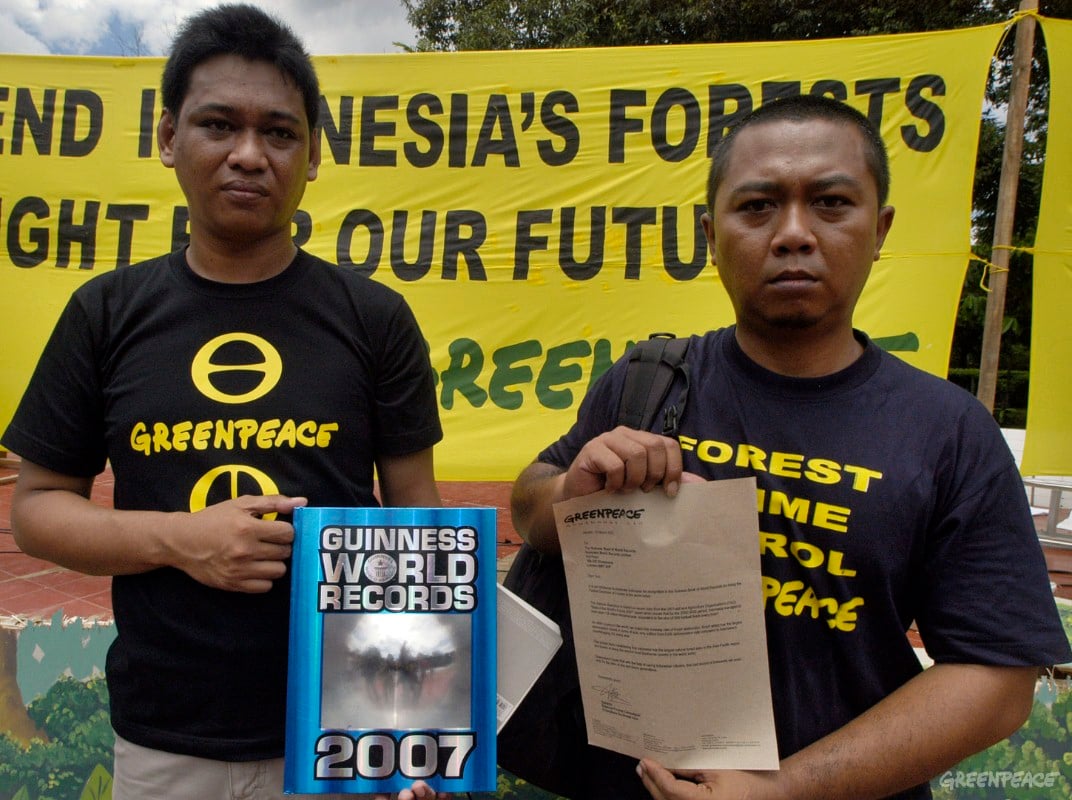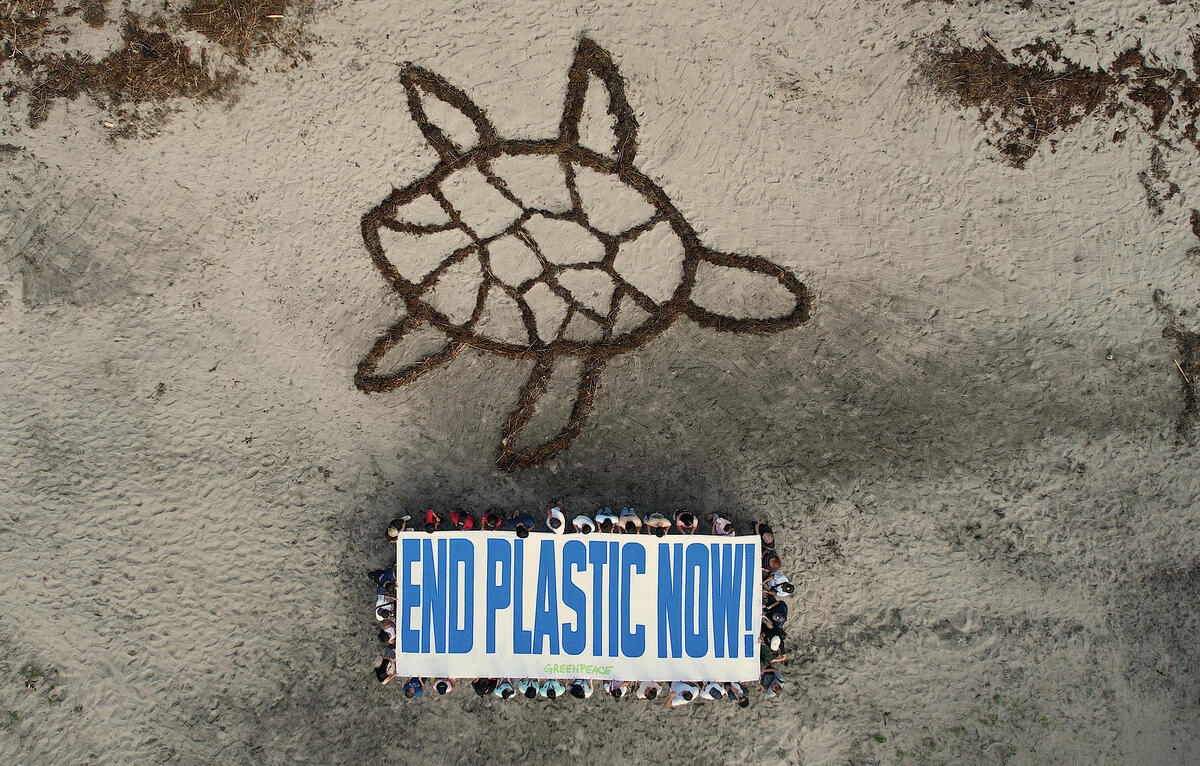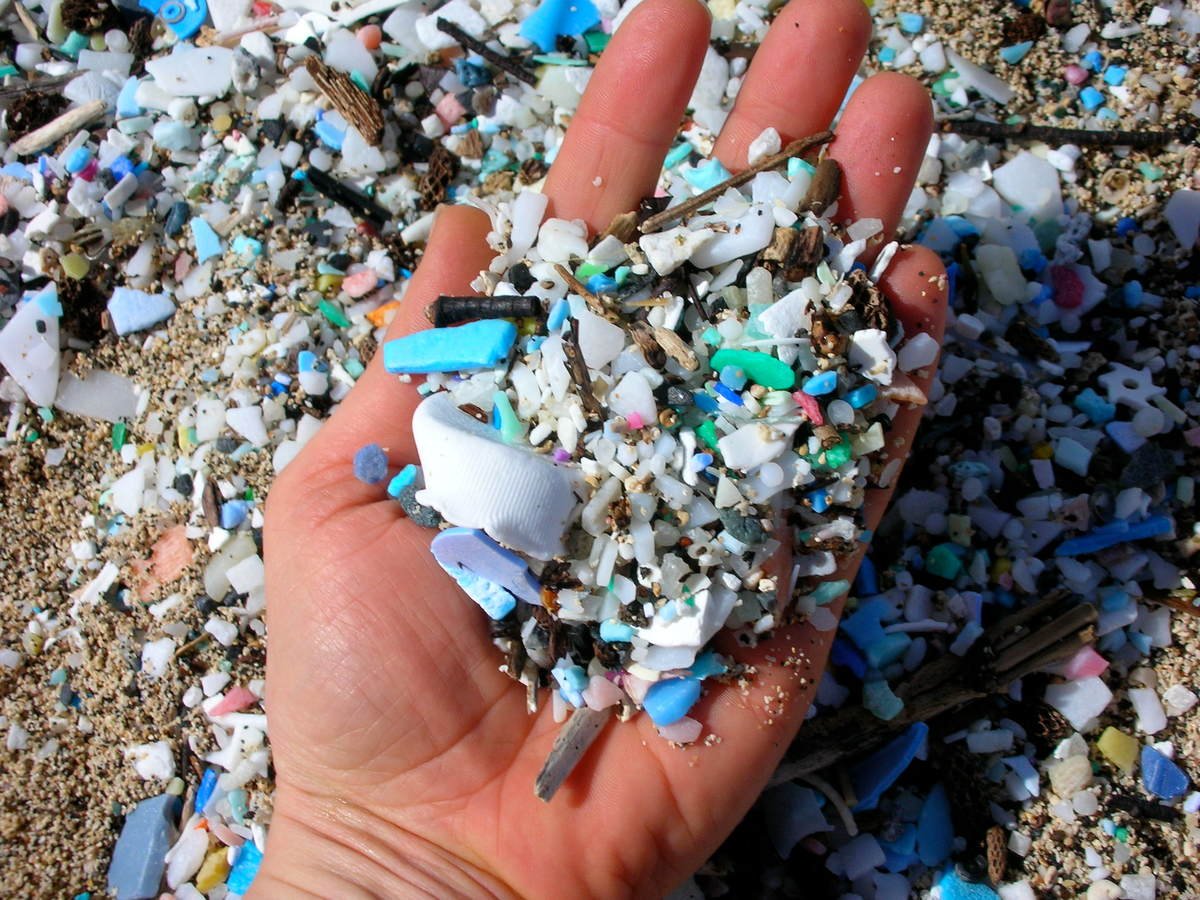
A Greenpeace activist dressed as a logger chainsawed a 20-meter wooden wall symbolizing the Indonesian forests for a “happening art” symbolically depicting the alarming rate of Indonesian forest destruction during Greenpeace Indonesia’s launching of the Forest Defenders campaign on March 16; 2007 at Jakarta’s Independence Proclamation Monument.
Guinness World Records, considered a global authority on
record-breaking achievements, has confirmed to Greenpeace (3) that
this unfortunate record will feature in its 2008 record book to be
published in September this year. It will read: “Of the 44
countries which collectively account for 90% of the world’s
forests, the country which pursues the world’s highest annual rate
of deforestation is Indonesia with 1.8 million ha (4,447,896 acres)
per year between 2000-2005 – a rate of 2 per cent annually or 51
square km (20 square miles) every day.” (4)
“It is a national shame for Indonesia to own this distinction in
the record books,” said Hapsoro, Greenpeace Southeast Asia forest
campaigner. “These record rates of destruction make Indonesia not
only the fastest forest destroyer but also the world’s number one
greenhousegas polluter from deforestation.” (5)
The record breaker was announced as the international community
are considering reduced or avoided deforestation to mitigate
climate change at the Third Working Group meeting of the
Intergovernmental Panel on Climate Change (IPCC) taking place in
Bangkok. Up to 25% of greenhouse gas emissions comes from tropical
forest clearance.(6)

Indonesia’s forests cover over 120 million hectares but the
forestry sector is plagued by lawlessness, corruption and forest
plunder, which the Indonesian Government is failing to control.
International demand for timber and paper, as well as commodities
such as palm oil, is driving this destruction.
“Only Indonesia can protect its forests and the people who
depend on them, but countries such as the EU, China, Japan and
North America must make sure that they are not a clearing house for
products of forest destruction,” said Hapsoro.
Greenpeace is calling on the Indonesian Government to stem the
tide of forest destruction and to reduce its contribution to
climate change by imposing a moratorium on commercial logging
operations in its rainforests. Greenpeace is also calling for
countries to ban the import of forest products that come from
illegal or destructive sources.
Notes to Editors: (1) Roadmap to recovery, 2006, Greenpeace
International (see: http://www.intactforests.org/) (2) World
Resources Institute, 1997, The Last Frontier Forests. (3) Copies of
the certificate from Guinness World Records that confirms the world
record are available on request. (4) While Indonesia is destroying
its forests the fastest in terms of its total forest cover, Brazil
destroys a larger area of forest every year. (5) Hooijer, Silvius,
M. Wosten and Page, 2006. PEAT-CO2 Assessment of CO2 Emissions from
Drained Peatlands and SE Asia. Delft hydrolics report Q3943. (6)
Houghton, RA (2003) Revised estimates of the annual net flux of
carbon to the atmosphere from changes in land use and land
management 1850 – 2000. Tellus 55B: 378-90; Houghton, RA (2005a)
Tropical Deforestation as a source of greenhouse emissions.



